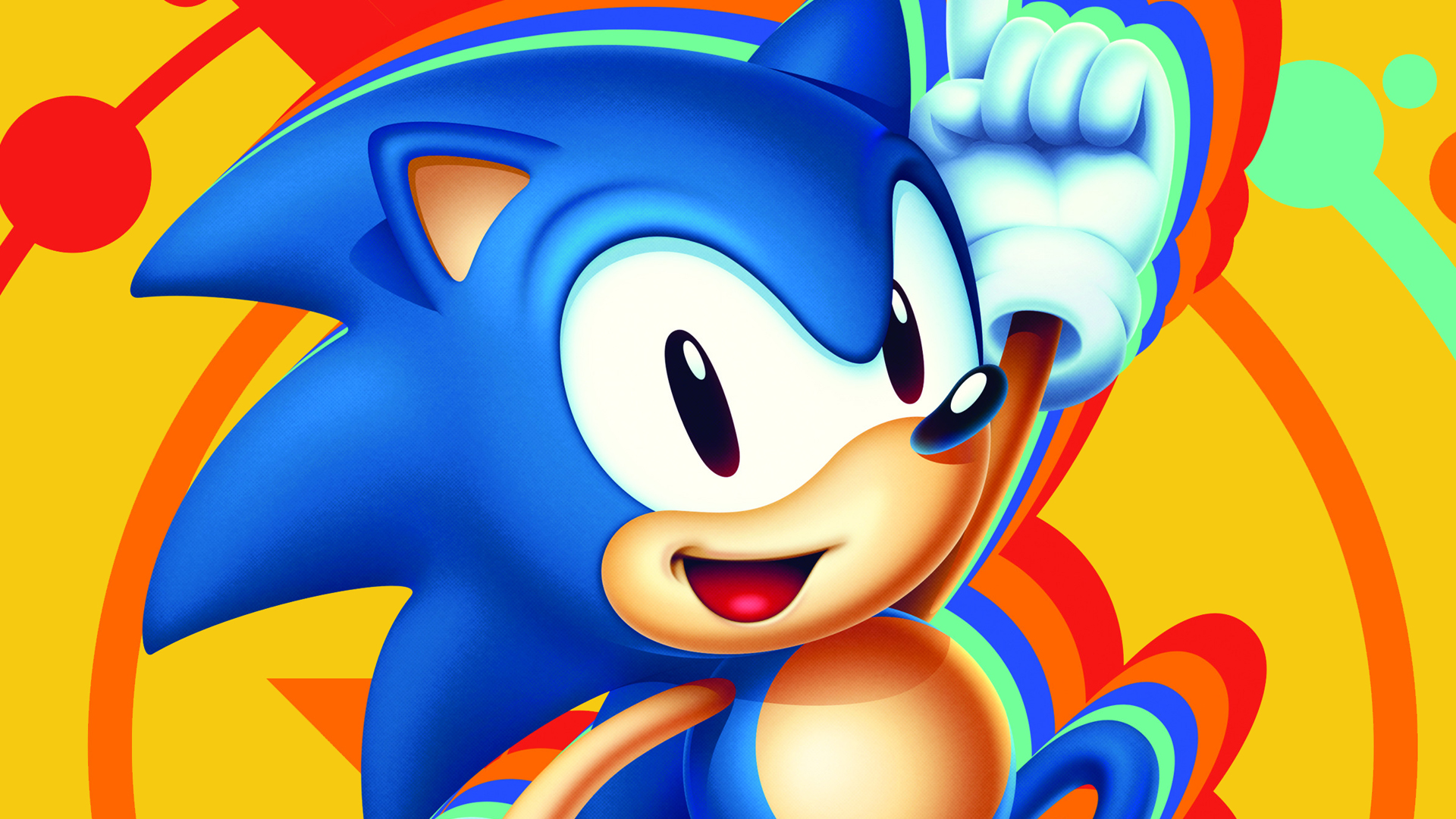Manic melodies: Sonic Mania's composer breaks down its soundtrack
Michael Jackson's signature style courses through these beats.

You've survived to reach the end of Lava Reef Zone Act 1. Deep below Angel Island, where murderous tunnelbots are out to steal your rings and the floor is lava except for when it's spikes. Suddenly, a targeting reticle appears. The ground shakes as you dodge out of the way. And then you hear it: a Yamaha fanfare and a walking beat straight out of a '90s dance track, which announces the arrival of the Driller Droid. It should be incongruous, and so should the music that follows: a keyboard pipe organ blaring a tune you'd hear on a carnival ghost train. Yet it fits perfectly. You may be about to battle a deadly metal spider but you're still playing a Sonic the Hedgehog game, and there's a limit to how serious that can be.
This is Sonic Mania's mini-boss theme 'Danger on the Dance Floor'. Even on a soundtrack chock full of danceable jams, this one struts. Ostentatiously.
"I definitely wanted something that conveyed danger, but in a silly yet stylish way," says composer Tee Lopes, who calls this track a combination of "some dark chords and a goofy melody." By way of contrast he brings up the main boss theme, 'Ruby Illusions', which has a much darker and more intimidating mood. With 'Danger on the Dance Floor' he had a different aim. "I wanted it to be childish, cheeky, with an almost mocking tone, as if to provoke the player right into the fight, but over a beat with an attitude, because I still needed Sonic to respect his wacky opponent. I thought it was a light, fun way to introduce the player to boss fights!"
Part of that provocation is a vocal sample repeating "Go!" It sounds like something you'd hear over a breakdown in a slightly trashy dance or house track, something by 2 Unlimited maybe. "That particular sample like many others was recorded by me at my studio," says Lopes, "and then processed into sounding like that. Sampling was a big thing in the classic Sonic era, and I was trying to emulate that trend here."
The classic 1990s sound of Sonic is what Sonic Mania is all about. Lopes came to Sega's attention after posting remixes and reimaginings of tracks like 'Spring Yard Zone' to YouTube as well as composing the soundtrack for fan project Sonic 2 HD. His initial idea for Sonic Mania was to draw on the sound of 1993's Sonic CD, imagining what a sequel would have sounded like. "As the game development and the soundtrack progressed, it kinda became its own thing," he says, "borrowing inspiration from several different Sonic and other Sega titles rather than just CD."
But back to 'Danger on the Dance Floor'. As well as emulating electronic music trends from the 1990s, it also borrows from Michael Jackson's 'Blood on the Dance Floor' and the sound of Jackson's new jack swing period more generally. It's relatively common knowledge now that Jackson contributed uncredited tracks to Sonic the Hedgehog 3, which Sega have denied but the game's composers confirmed. Lopes admits that Jackson was a big influence. "He is such an icon of 90s music to me," Lopes says. "I think primarily I was trying to evoke the musical style of those times, but also, it's undeniable that he inspired decades of music."
Among the Sonic 3 tracks fans believe is most likely to be a Jackson contribution is 'Carnival Night Zone'. (Another is the end credits, which are similar enough to Jackson's 1996 single 'Stranger In Moscow' that there's a compelling mash-up of the two.) It shares a funfair-esque "Danny Elfman soundtracks Halloween" vibe with 'Danger on the Dance Floor' and another source: 'Dr. Robotnik's Theme' from the Adventures of Sonic the Hedgehog cartoon.
Keep up to date with the most important stories and the best deals, as picked by the PC Gamer team.
For those of us who didn't grow up with a Sega console its accompanying cartoonish classical score is as much part of Sonic's heritage as the anime tropicalia that went into the games.
Despite the shared vibe, the similarities between 'Danger on the Dance Floor' and 'Dr. Robotnik's Theme' are coincidental. "I did watch the show as a child, but it was so long ago I wasn't even aware of that theme anymore!" Lopes says. "It's possible that the cartoon may have helped me develop a certain concept about the character's demeanor, that now reflects on this theme."
There are deliberate nods, though: the way Press Garden Zone Act 2's music resembles Revenge of the Shinobi (Robotnik's corrupted Japanese garden and its shuriken-throwing boss are a perfect match), as well as the way parts of the Sky Chase Zone from Sonic 2 and the airplane section of Mirage Saloon sound alike. And you may have noticed that Sonic Mania's main menu music sounds a bit like a slowed down version of the theme that plays in Sega Rally on the car selection menu.
Sonic Mania's rich with easter eggs. After a boss fight in Studiopolis a TV screen starts malfunctioning, playing the same buzzing noise that plagued Sega's infamous 25th anniversary livestream. Graffiti on that zone's subway trains spells out messages seen in the original Sonic's Spring Yard Zone, including the memorable admonishment to COPE. Slow down long enough to hunt for them and you can find the SegaSonic popcorn shop, flippable letters that remind you GENESIS DOES, and cameos by forgotten characters like Fang the Sniper, Bean the Dynamite, and Bark the Polar Bear from Sonic Championship.
Like the rest of Sonic Mania, its soundtrack is layered with loving nods to both the early Sonic games and the culture that surrounded them, from the pop music of the period to the other games that might have been filed right alongside Sonic 3 & Knuckles in your collection. There's a limit to how much more of this trainspotting Lopes will indulge us in, however. "I think it's more fun if the fans spot these references themselves!"

Jody's first computer was a Commodore 64, so he remembers having to use a code wheel to play Pool of Radiance. A former music journalist who interviewed everyone from Giorgio Moroder to Trent Reznor, Jody also co-hosted Australia's first radio show about videogames, Zed Games. He's written for Rock Paper Shotgun, The Big Issue, GamesRadar, Zam, Glixel, Five Out of Ten Magazine, and Playboy.com, whose cheques with the bunny logo made for fun conversations at the bank. Jody's first article for PC Gamer was about the audio of Alien Isolation, published in 2015, and since then he's written about why Silent Hill belongs on PC, why Recettear: An Item Shop's Tale is the best fantasy shopkeeper tycoon game, and how weird Lost Ark can get. Jody edited PC Gamer Indie from 2017 to 2018, and he eventually lived up to his promise to play every Warhammer videogame.



